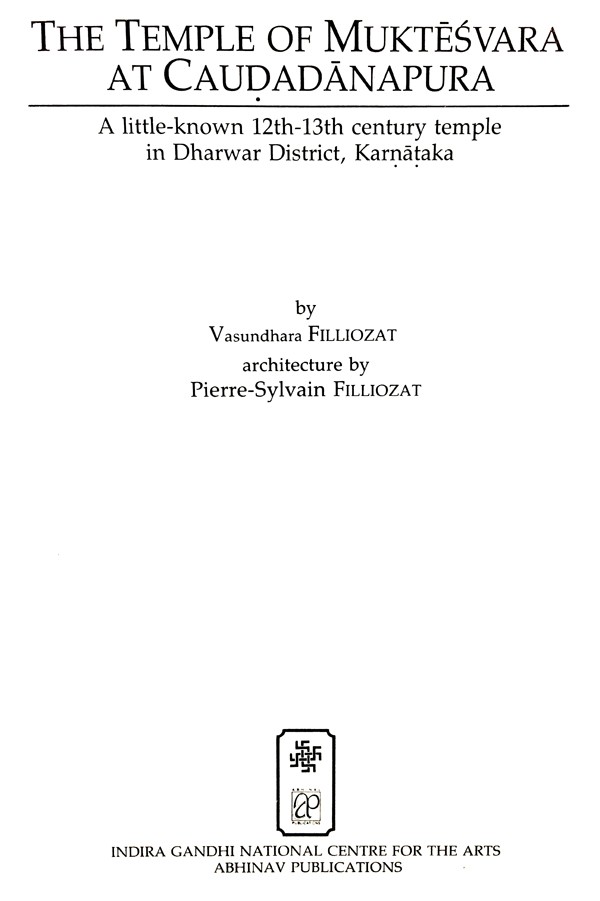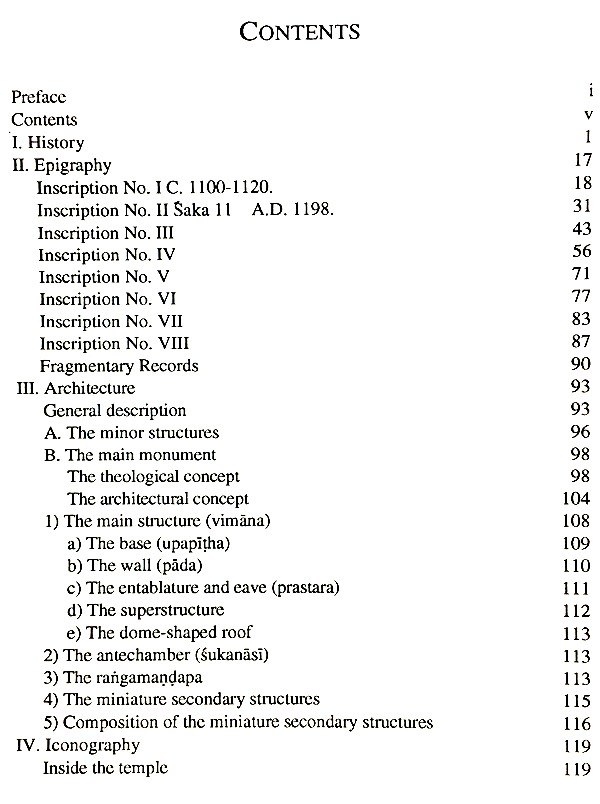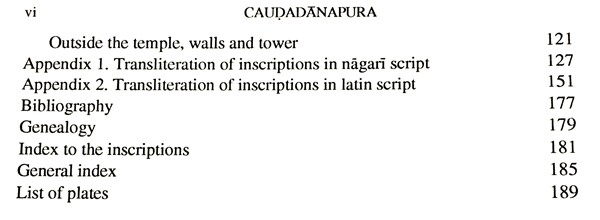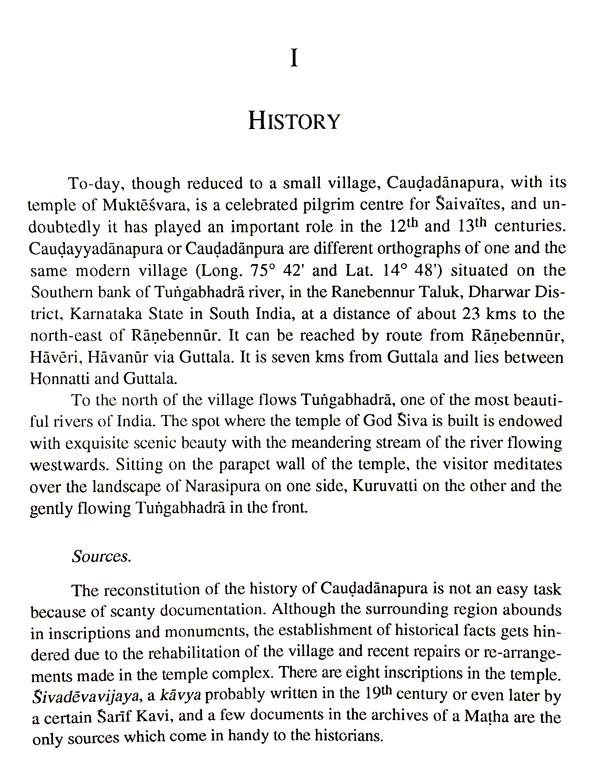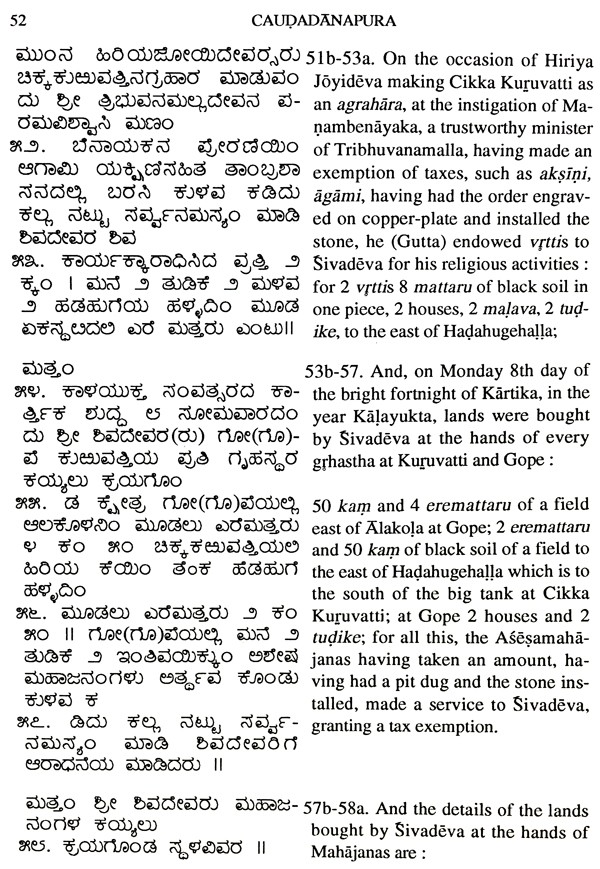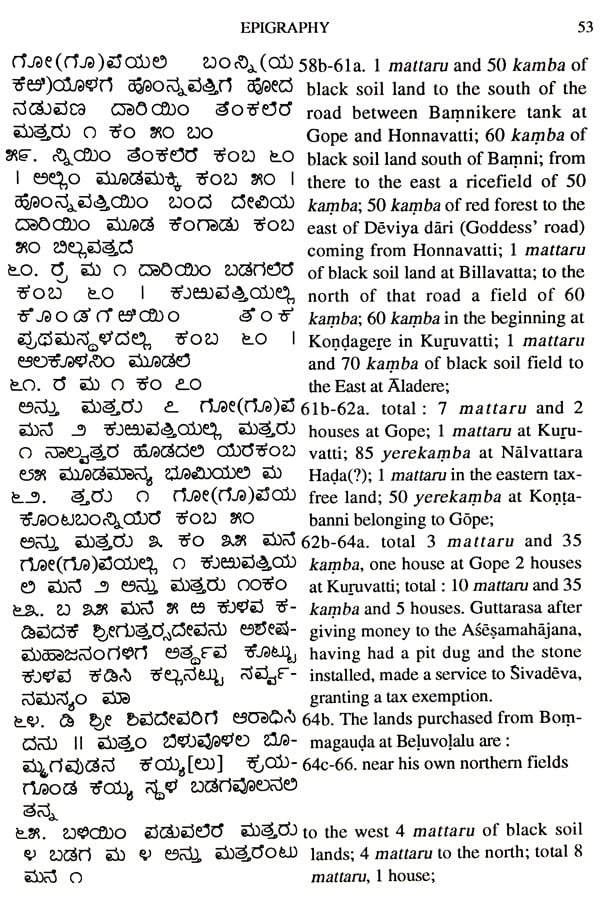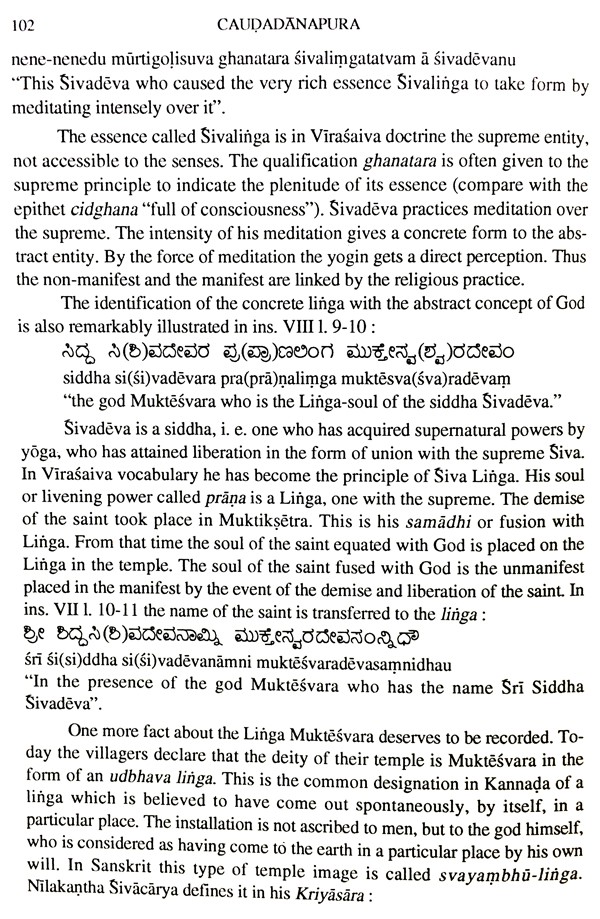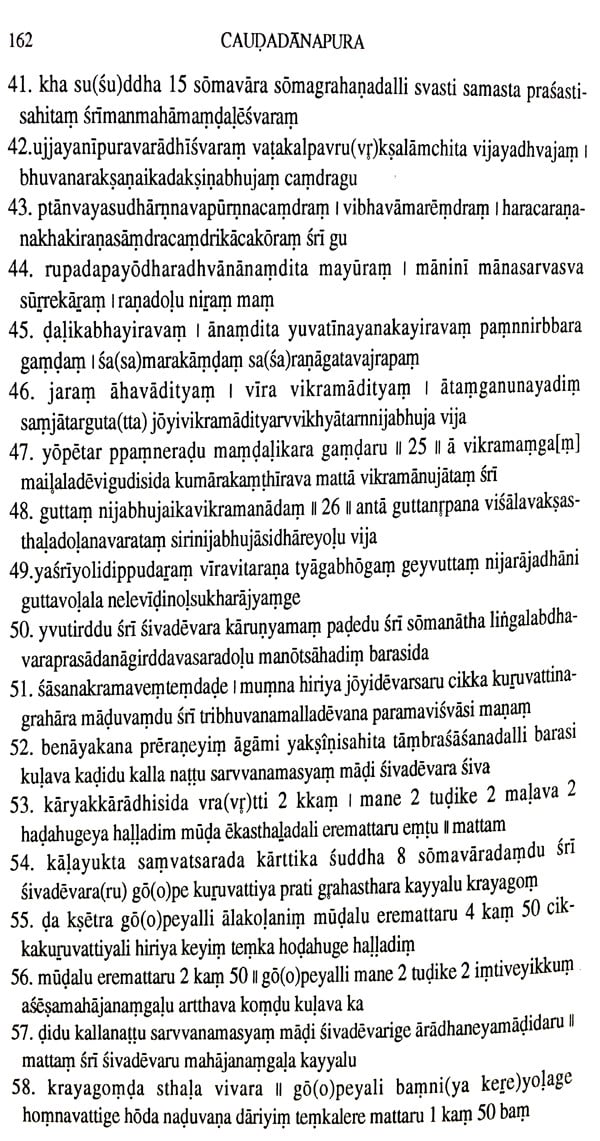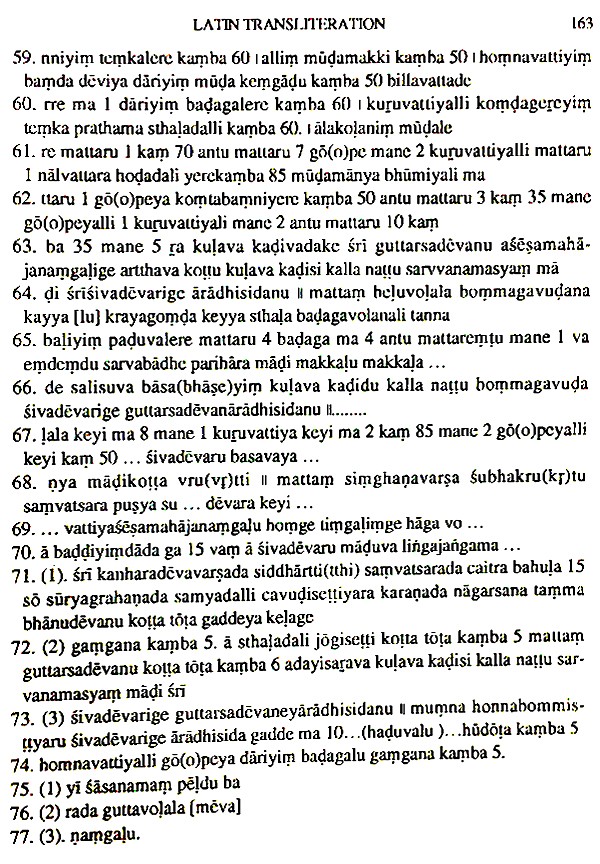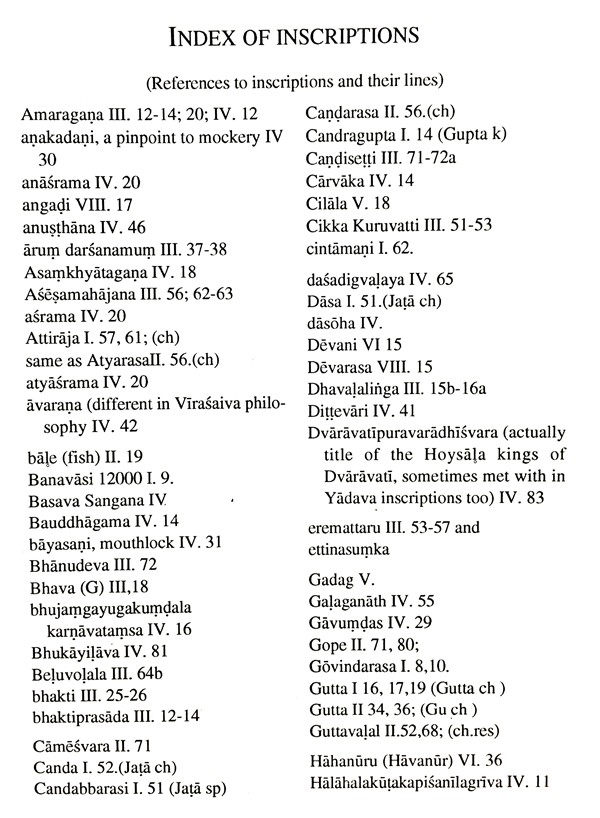
The Temple of Muktesvara At Caudadanapura- A Little Known 12th-13th Century Temple In Dharwar District, Karnataka
Book Specification
| Item Code: | UAV324 |
| Author: | Vasundhara Filliozat |
| Publisher: | Indira Gandhi National Centre for the Arts |
| Language: | English |
| Edition: | 1995 |
| ISBN: | 8170173272 |
| Pages: | 205 (Throughout Color Illustrations) |
| Cover: | HARDCOVER |
| Other Details | 11.00 X 9.50 inch |
| Weight | 1.07 kg |
Book Description
The northern part of Karnataka is one of the richest areas of India in monuments of great artistic value. It was subjected to the rule of several royal families, Calukyas of Kalyana, Kalacuris and Seunas in the 10th, 11th, 12th and 13th centuries A.D. which has been a period of great cultural refinement. It was the time of the greatest expansion of the Kälämukha-Läkulaśaiva movements, and of the rise of Viraśaivism. The temple of Muktesvara at Caudadanapura (Dharwar District) is a beautiful representative of the style and the high culture of that time. Its history is known to us thanks to a set of seven long inscriptions, composed in literary medieval Kannada, engraved with great care on large steles. They provide informations on the local rulers, kings of Guttala who claimed a Gupta ascendancy, on some constructions in the temple. complex, on diverse donations to the deity, and very interesting details on a few prominent religious leaders. It introduces to us Muktajiyar, a Läkulaśaiva saint, and Sivadeva, a Viraśaiva saint, who entered the place on the 19th of August 1225 and led there a long life of renunciation, asceticism and spiritual elevation. The legacy of this age of intense Saivite faith is a jewel of architecture and sculpture. It is a single cella temple in what is popularly known as Jakkanacari style, sometimes called Kalyana-Calukyan style, which is not appropriate, as many temples of the same style have also been built under the patronage of Kalacuri or Seuna dynasties. The present study contains a historical introduction, the complete edition, translation and interpretation of the inscriptions, an architectural description, with a graphic survey, and an iconographical analysis.
Vasundhara Filliozat, born in Haveri, Karnataka, holds a master's Degree from Karnatak University, Dharwar, and a Ph.D. from Sorbonne, Paris, France. From 1972 to 1984 she worked on many aspects of history of the Karnataka kings who ruled from Hampi-Vijayanagar. From 1985 onwards she works on the temples of Jakkanǎcări style in the Dharwar District of Karnataka. She is a free-lance historian and epigraphist. Her fields of interest extend upto dance, music, drama and literature. She has published a number of books and articles in Kannada, English and French on Hampi, history of Karnataka, Indian music and drama, Kannada and French literature.
"The Temple of Muktesvara at Caudadanapura", a monograph incorporating the studies undertaken by Vasundhara Filliozat at her own initiative, has been included in scheme of publications of the Indira Gandhi National Centre for the Arts (IGNCA) under the Kalasamālocană series for its significant contents concentrating on regional structural and cultural idioms in the context of Karnataka. The IGNCA views the regional architectural tradition of India as the basic source of any artistic expression; and such an approach becomes highly relevant in regard to a particular shrine or group of shrines which have not been analyzed in the light of available evidence of Vastu and Agama texts. Thus, in this respect the Muktesvara temple at Caudadanapura (District Dharwar), which is associated with Virasaivism as a living shrine, makes an ideal choice.
IGNCA is aware of the importance of the cultural heritage of Karnataka and has already brought out Pierre-Sylvain Filliozat's Svayambhuvasutrasamgraha', a Saiva agamic text, and will be publishing soon a monograph by Adam Hardy on the Karnataka temples. Vasundhara Filliozat's monograph on Muktēśvara temple, devoted to and inspired by Viraśaivism, may offer a different regional perspective on the subject combining cultural ethos, artistic creativity and spiritual idealism.
**Contents and Sample Pages**
